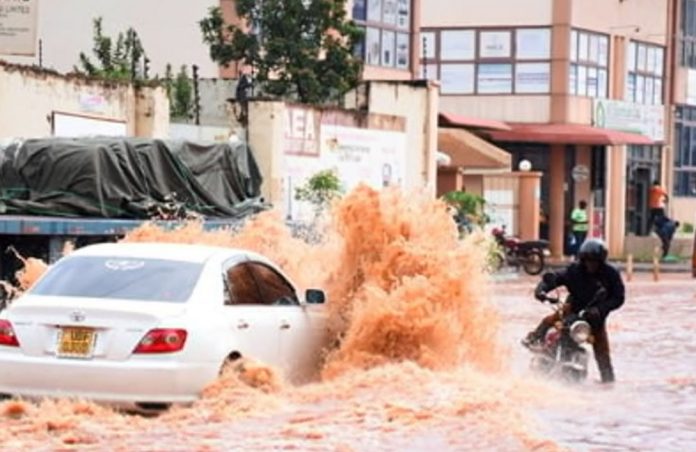I watched with a pained heart as pictures of a flooding Kampala sauntered back and forth on the various social media streets. Like most of our realities, these had soon been turned into memes, hilarious memes. Boda-boda riders and obviously desperate passengers ploughing through the murky waters was a hit.
But once you put the jokes aside, and looked at the floods as a real problem, it was not funny. Not one bit!
Kampala is the country’s biggest city, and one would even argue that it is the only city really. That means we should be able to have tourists who want to see, live and explore the city. But how are we going to tell a busload of tourists that they can’t go to some parts of the city because they will be flooding? Get this, some of these flooded areas are journeys out of the city into the various destinations our tourists might be looking to explore. This, therefore, begs the question, how did we get here?
Uganda is a country of an estimated 44million people, about 20% of whom make up the urban population. So while 80% live in rural areas instead of the developing urban areas, major cities have been plunged into a population boom of mostly low-income earners who make up a large part of the city’s slums.
True, of the total of 259 urban centers in the country, Kampala was top among the destinations for many young people. Though Wakiso district takes the lion share of the population, the Uganda Bureau of Statistics (UBOS) places Kampala City’s population at nearly 2 million people.
Sadly with the country’s population generally growing at 3.26% annually with over 1million Ugandans born each year, many more will migrate into the city in search of greener pastures. Note that the district that is Kampala has an area of about 189 km2, of which 13km2 is Lake Victoria and other waterways. Sadly, these are not clear waterways as they have been burdened with our poor waste disposal habits.
To contain this population and its habits, the Kampala Capital City Authority (KCCA), the body mandated to run the city, has been left with a lot on its plate. A baseline survey Development Research and Training affirm these worries with daunting statistics.
While Kampala Central Division leads in access to clean water with 100%, in other divisions, access to clean water was as follows; Nakawa (45%), Makindye (66%), Kawempe (86%), and Lubaga (70%). Overall, 25% of households do not have access to safe water sources. Note that those in want of clean water live in the slums whereof nearly 50% of the city’s people reside.
But then again, many of these slums are right in the belly of our wetlands and nature is angry! But that will be for another day, for now though, let me wrap up this discussion with a picture of our un-organic waste, that among other things has been known to cause flooding. And by this dear folks, I am talking garbage, and specifically our un-organic garbage.
Did you know that the over 20-acre KCCA owned garbage collection point is choking with a chunk of un-organic garbage? Before it finds its way to this Kitezi garbage collection point, this garbage would have caused clogging in the already overwhelmed trenches. This, which includes plastic bottles, polythene bags, straws among other things, will render the overwhelmed drainage systems useless. This conversation is only just beginning!

























